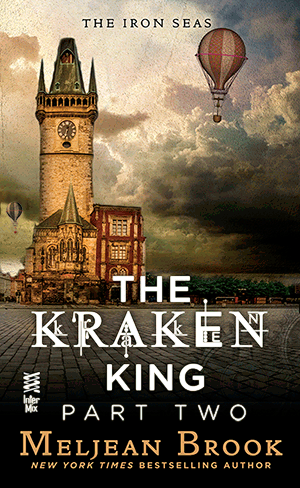Steampunk Q&A – Part 3 + Postcards
With the release only a week and a half away, the Heart of Steel postcards are ready to go out. As you can see, I have quite a few international cards — if you’ve signed up for the postcard mailing list but never receive them, please let me know! I don’t know how long they usually take, but they should be arriving within a week or two. If you’re in the U.S., you should have them by the end of next week.

It’s too late for this mailing, but if you would like to receive a postcard reminder for each novel release, please sign up here. NOTE: This means that man-titty might show up in your mailbox! If you prefer to receive e-mail only reminders, I also have an e-mail newsletter that I only send out when I have a release and/or a significant amount of news or updates.
Steampunk Q&A – Brenda Hyde said:
I can’t remember where I saw this, but an editor of a smaller digital publishing company said they would love to see steampunk stories submitted that were NOT Victorian. My question is would it truly be Steampunk if it weren’t Victorian in some way?
No, it doesn’t have to be Victorian. I think this misconception is pretty common because most of the steampunk that we see is Victorian-ish (perhaps because when many of us think of advancing technology — especially steam technology — we think of the Industrial Revolution in England?) I’m not sure exactly why Victorian England is so often considered the only setting/era for steampunk, but it absolutely doesn’t have to be — and yes, it is still truly steampunk if it isn’t.
One blog that is a really fantastic resource for imagining steampunk that goes beyond Victorian England is the aptly named “Beyond Victoriana.” I highly recommend it to those looking to see what steampunk can look like beyond the popular Victorian version.
Also, I’ve been seeing SO many variations such as Cyberpunk, Dieselpunk etc. How do they figure into the Steampunk scene?
Actually, steampunk figures into the cyberpunk scene 😀 This is kind of what happened (overly simplified.)
“Steampunk” hasn’t always been known as steampunk — it wasn’t really called anything (that I know of.) It was just historical set science fiction/alternate histories. Then along comes cyberpunk (books like Neuromancer by William Gibson), and that term is bandied about science fiction reading communities.
The term steampunk is actually a reference to that — instead of cyber/futuristic books, they are historical books where the technology is all steam powered (or at least, it hasn’t crossed over into modern technology like internal combustion engines or computers.) In that way, it’s a bit of a joke. But, hey — it’s a catchy term and it does the job of indicating the type of science fiction it is. So it sticks, and now there’s a way of referring to these types of historical science fiction/alternate history tales.
From there, you can just do the same thing to refer to other types of alternate histories/historical science fiction. Clockpunk, like in Jay Lake’s Mainspring — the primary tech is going to be gears/clockworks. Dieselpunk — I always think of this as a rougher, dirtier version of retrofuturism, and typically with a setting that feels pre-WWII. I’ve also seen tongue-in-cheek references to a setting, like sandalpunk (steampunk set in Ancient Greece or Rome) or Icepunk (Kate Elliott’s Spiritwalker series, which is described on her site as “an Afro-Celtic post-Roman icepunk Regency fantasy adventure with airships, Phoenician spies, the intelligent descendents of troodons, and a dash of steampunk whose gas lamps can be easily doused by the touch of a powerful cold mage.”)
So they are like a quick-and-dirty (and fun) way to describe the tech or setting. They aren’t necessarily steampunk (although they can be a sub-category of steampunk), but the terms usually are in reference to some kind of alternate history, and whatever comes before the “punk” tries to give an indication of exactly what that history/tech is.



